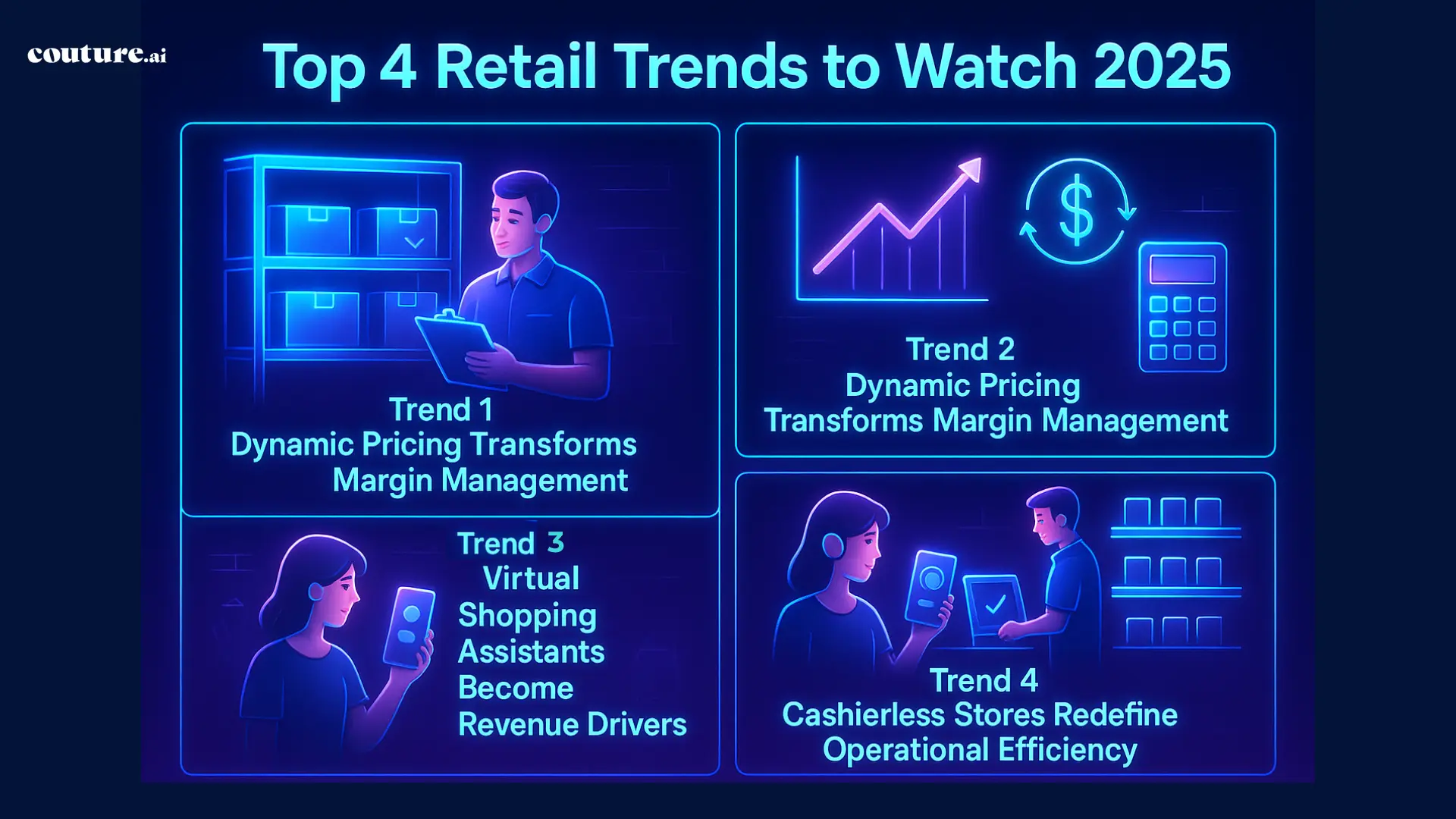Will your retail strategy evolve or evaporate in the face of rapid change?
Retail is undergoing one of its most transformative phases yet. With the global industry size expected to reach $35.2 trillion by 2025 and grow to approximately $50.8 trillion by 2030, innovation is no longer optional, it's the price of staying in the game. Every new solution promises to "revolutionize" operations, but few deliver measurable results. That’s why it’s more critical than ever to focus on what truly matters: technologies that solve real problems and create real value.

In this blog, we explore the top 4 retail trends set to shape 2025, and more importantly, what actions you should take now to stay competitive.
Inventory has always been a balancing act for retailers. Overstock ties up capital and leads to markdowns. Understock means missed sales and disappointed customers.
AI-powered smarter inventory management is solving this challenge with remarkable accuracy.
Couture.ai for inventory management reduces costs, maximizes sell-through rates, and ROI by ensuring products are available where they have the highest sales potential.
The most practical advantage? These systems now integrate seamlessly with existing POS, ERP, and supply chain platforms, making implementation much more straightforward than in previous years. Explore more here: AI-driven smart replenishment solutions.
The AI-powered inventory management market size will grow from $7.38 billion in 2024 to $9.6 billion in 2025 (that’s 30.1% growth). This ultimately indicates a strong shift towards AI-driven solutions in retail, aiming to optimize stock levels and reduce operational costs.
Static pricing is becoming as outdated as paper catalogs as more retailers adopt intelligent pricing strategies that respond to market conditions in real-time.
Picture a pricing strategy that works like a skilled trader rather than a static price tag—reading market signals, understanding competitive positioning, and making calculated adjustments when conditions change.
Deloitte's 2025 US Retail Industry Outlook does indicate that three-quarters(around 75%) of retail executives expect AI to assist with dynamic pricing based on demand, competition, and other factors.
Virtual shopping assistants are now becoming a necessity for fast-forward fashion retailers. In 2022, the virtual shopping assistant market size was valued at approximately $516.44 million, and it's expected to grow at a CAGR of 29.6% during the forecast period (2023 to 2032).
Imagine having your most knowledgeable sales associate available to every customer simultaneously, remembering their preferences perfectly, and never having an off day.
The difference between ineffective and powerful virtual assistants? Deep integration with inventory systems and customer data that provides actionable recommendations rather than generic suggestions.
Just-walk-out technology is expanding beyond Amazon Go as mainstream retailers adopt various levels of cashierless capabilities to streamline operations.
Think of cashierless technology as removing the administrative burden from shopping, similar to how electronic payments eliminated the need to count cash—it doesn't change what customers buy, but it completely transforms the experience of buying it.
The most successful implementations don't eliminate human interaction—they redirect it from transactional tasks to consultative selling, where human expertise adds genuine value.
Top retailers are adopting AI and strategically integrating it to solve core operational challenges to enhance customer experiences.
The retailers winning today aren't chasing trends; they're implementing smart solutions that solve real business challenges and improve customer experiences. Whether it's reducing stockouts with AI inventory systems or improving margins with dynamic pricing, execution matters more than aspiration.
Schedule a free 30-minute demo to see how these top four retail trends could drive tangible results for your business.
Remember: These retail trends aren't optional enhancements; they're becoming the standard by which customers will judge their shopping experiences in 2025 and beyond.
Subscribe to get the latest updates and trends in AI, automation, and intelligent solutions — directly in your inbox.
Stay Informed: Insights and Trends from Couture AI
Join the AI revolution and elevate your retail experience with Couture AI.